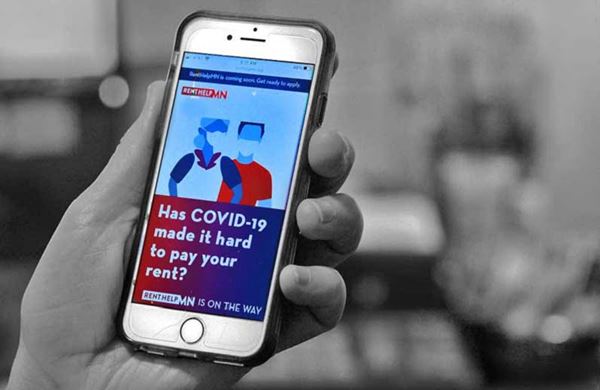Rent assistance gives help, hope to thousands
Cassandra Block had just started training in the emergency rent assistance program. On her second call, she was able to confirm for a resident that she would be receiving help.
"I was so happy to tell her, 'You meet our guidelines, you're eligible — and I want to make you aware that we're paying for April, May and June' — and she just cried," Block said.
Block was one of 70-some county staff who stepped away from their regular work to help get federal money to residents who couldn't afford their rent because of the COVID-19 pandemic.
Health and Human Services has been partnering with Housing and Economic Development to administer emergency rent assistance programs since Coronavirus Aid, Relief, and Economic Security Act funding was released last year.
Heidi Schmidt Boyd, who oversees Health and Human Services staff working with applicants, says many staff on the team "have never done anything like this before, and they are so happy to be doing it. In a time when everyone feels so hopeless, there's a real personal investment for them in being able to provide this kind of help."

Removing barriers to provide help quickly
In 2020, Hennepin County provided $22 million of emergency rent assistance to more than 6,000 households financially affected by the pandemic.
“We really focused on making it as easy as possible to apply,” said Julia Welle Ayres, manager of Housing Development and Finance. “Minimizing barriers allowed us to get help to those who needed it most quickly and efficiently.”
In 2020, around two-thirds of households helped had extremely low incomes and 50% of funds went to areas most impacted by COVID-19.
The Health and Human Services staff were part of a three-pronged approach, working together with contracted providers who also processed tenant applications, and a separate administrator that processed applications from affordable rental property owners applying on behalf of their tenants.
To better reach historically underserved populations, the county contracted with a cohort of 17 community and cultural organizations to promote the program and help residents from diverse backgrounds apply.
“This intentional strategy allowed us to serve new residents that have not previously received county services, with a special focus on reaching communities most vulnerable to the economic impacts of the pandemic,” Welle Ayres said. “The moment called for all hands on deck. Thanks to these critical partnerships, we were able to meet the moment and help thousands of county residents facing extraordinary challenges.”
Added funding helps meet needs
Hennepin County received an additional $25 million of emergency rental assistance in January 2021, and a further $31 million in May 2021.
To kick off the 2021 programming, Housing and Economic Development and Health and Human Services partnered again to roll out a March rental assistance "sprint.”
After working through that two-week round of applications, the county staff and contracted providers shifted to processing applications tenants submitted through the State’s RentHelpMN application. In June, Hennepin and other metro partners launched the Zero Balance Project, a partnership that works with affordable rental property owners and managers to apply on behalf of their tenants.
As of the end of September 2021, these efforts distributed $20.6 million of rent and utility assistance to 3600 low-income renters. The average amount paid has been nearly $6,400, but Schmidt Boyd said some people have been eligible for as much as $20,000.
"Can you imagine the level of stress on those people and on the landlords?" she said. "This keeps renters in stable housing and landlords able to stay in business so that housing is available.
Cassandra Block, who joined Hennepin County just a year ago, thinks being part of this team is "just amazing — knowing that the people doing this work actually care and they want the name of Hennepin County to mean something."
She's holding onto an email from the woman who cried after hearing she was eligible. It reads in part:
"That is so awesome! I’ll be able to catch up and actually live again! Thank you so, so much for your help with this! I haven’t felt hopeful for so long … thanks again for all you do!"
This story reflects Hennepin County disparity reduction priorities in housing, income and health.
